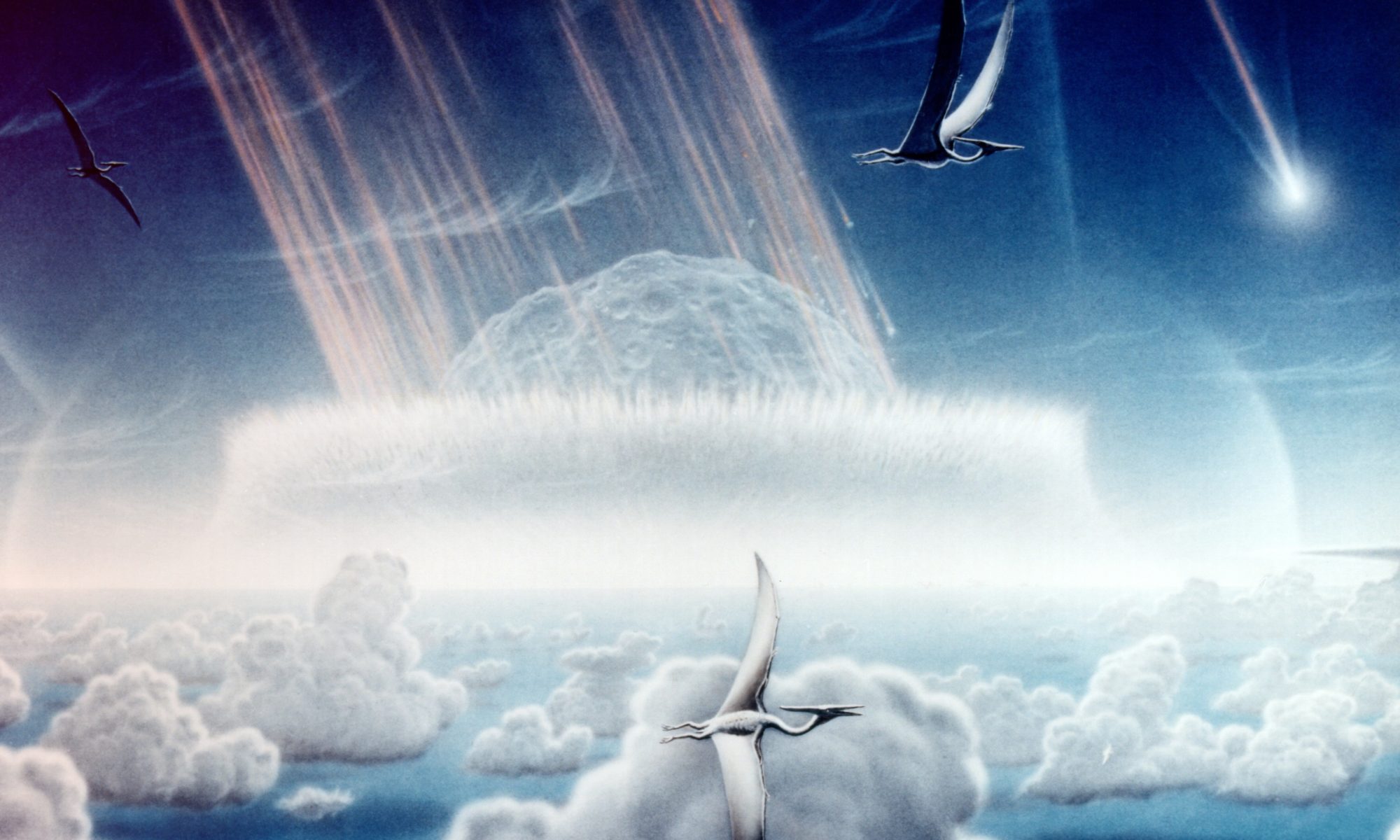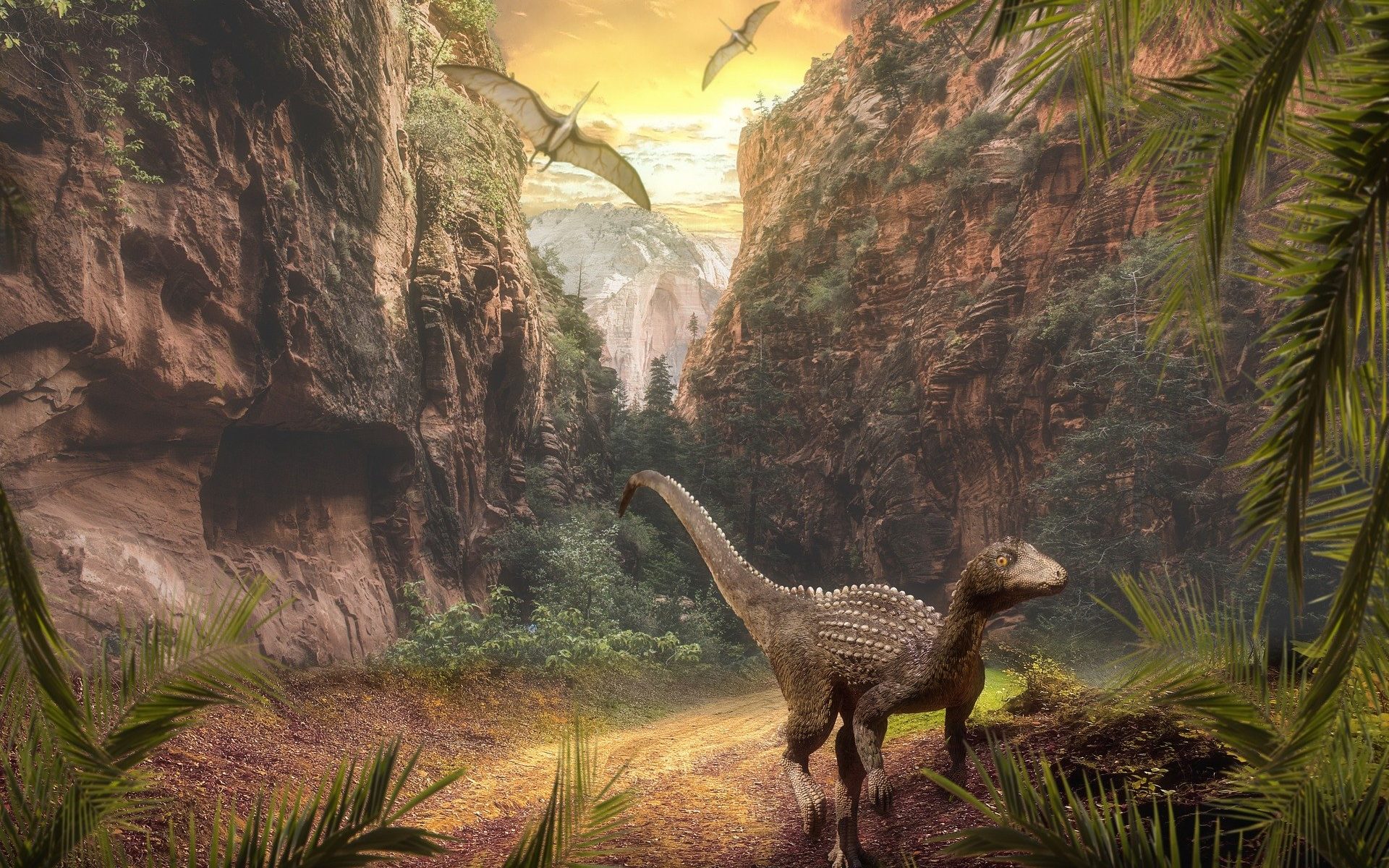Featuring image: 66 million years ago, a giant meteorite impact ended the age of the dinosaurs. Artist impression of the impact. Painting by Donald E. Davis, Public Domain (C0)
Paper: The Nadir Crater offshore West Africa: A candidate Cretaceous-Paleogene impact structure
Authors: U. Nicholson, V. J. Bray, S. P. S. Gulick, B. Aduomahor
The appearance of a flaming, 10 km wide meteorite over the Gulf of Mexico must have been striking, literally. But could the meteorite, which killed the dinosaurs, have had a small sibling or even a whole family of smaller space rocks hurtling towards Earth?
The massive meteorite impact at Chicxulub in the Gulf of Mexico ended the era of the dinosaurs 66 million years ago. Now, only a few thousand km apart from it, researchers might have found another, smaller crater of a similar age. And it might show that the Chicxulub meteorite was not alone but part of a cluster of meteorites, bombarding the Earth at the end of the Cretaceous period.
Continue reading “Chicxulub’s small sibling”

